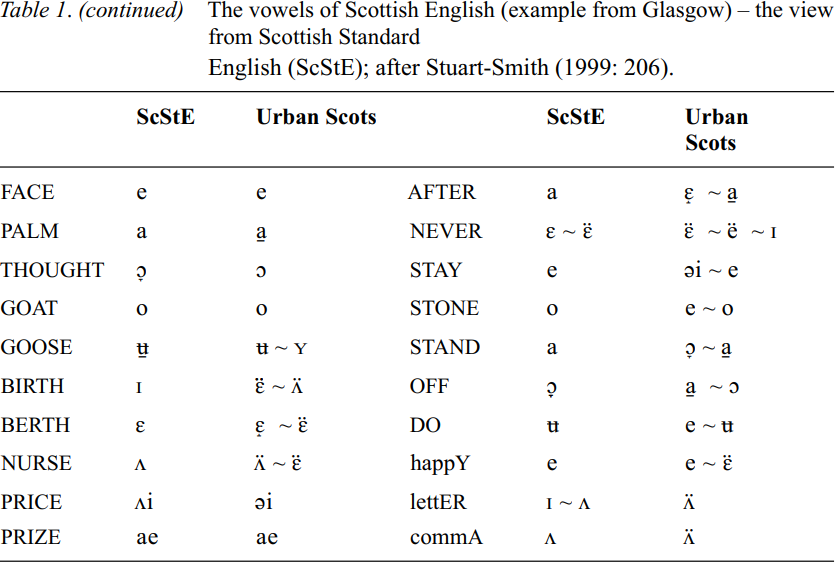

Grammar


Tenses


Present

Present Simple

Present Continuous

Present Perfect

Present Perfect Continuous


Past

Past Simple

Past Continuous

Past Perfect

Past Perfect Continuous


Future

Future Simple

Future Continuous

Future Perfect

Future Perfect Continuous


Parts Of Speech


Nouns

Countable and uncountable nouns

Verbal nouns

Singular and Plural nouns

Proper nouns

Nouns gender

Nouns definition

Concrete nouns

Abstract nouns

Common nouns

Collective nouns

Definition Of Nouns


Verbs

Stative and dynamic verbs

Finite and nonfinite verbs

To be verbs

Transitive and intransitive verbs

Auxiliary verbs

Modal verbs

Regular and irregular verbs

Action verbs


Adverbs

Relative adverbs

Interrogative adverbs

Adverbs of time

Adverbs of place

Adverbs of reason

Adverbs of quantity

Adverbs of manner

Adverbs of frequency

Adverbs of affirmation


Adjectives

Quantitative adjective

Proper adjective

Possessive adjective

Numeral adjective

Interrogative adjective

Distributive adjective

Descriptive adjective

Demonstrative adjective


Pronouns

Subject pronoun

Relative pronoun

Reflexive pronoun

Reciprocal pronoun

Possessive pronoun

Personal pronoun

Interrogative pronoun

Indefinite pronoun

Emphatic pronoun

Distributive pronoun

Demonstrative pronoun


Pre Position


Preposition by function

Time preposition

Reason preposition

Possession preposition

Place preposition

Phrases preposition

Origin preposition

Measure preposition

Direction preposition

Contrast preposition

Agent preposition


Preposition by construction

Simple preposition

Phrase preposition

Double preposition

Compound preposition


Conjunctions

Subordinating conjunction

Correlative conjunction

Coordinating conjunction

Conjunctive adverbs


Interjections

Express calling interjection


Grammar Rules

Passive and Active

Preference

Requests and offers

wishes

Be used to

Some and any

Could have done

Describing people

Giving advices

Possession

Comparative and superlative

Giving Reason

Making Suggestions

Apologizing

Forming questions

Since and for

Directions

Obligation

Adverbials

invitation

Articles

Imaginary condition

Zero conditional

First conditional

Second conditional

Third conditional

Reported speech


Linguistics

Phonetics

Phonology

Linguistics fields

Syntax

Morphology

Semantics

pragmatics

History

Writing

Grammar

Phonetics and Phonology

Semiotics


Reading Comprehension

Elementary

Intermediate

Advanced


Teaching Methods

Teaching Strategies

Assessment
Vowels
المؤلف:
Jane Stuart-Smith
المصدر:
A Handbook Of Varieties Of English Phonology
الجزء والصفحة:
52-3
2024-02-12
1216
Vowels
The vowels of Scottish English are:  . Describing these vowels is complicated by the fact that they show two distinct but intersecting systems of lexical incidence typical of Scottish Standard English and Scots, which cannot be captured by using Wells’ (1982) lexical sets alone (e.g. Macafee 2003: 139). The picture is further complicated by Scots showing some regional differences for certain vowels. I therefore use three tables to illustrate the vowels of Scottish English. Table 1 shows the phonetic realizations of the vowels of Scottish Standard English together with variants typical of Urban Scots found in Glasgow, which is similar in many, but not all respects, to that of Edinburgh and across the Central Belt (e.g. Macafee 1994: 23–24). Table 2 gives the view from Scots, by showing Scots lexical incidence (after Johnston 1997). The column in the middle reflects the ‘system’ that is found in most Urban Scots speakers in Glasgow, that is certain vowels whose categories, if not realizations, are largely ‘shared’ across Scots and Scottish Standard English, and others which may alternate. Table 3 gives a very broad overview of regional variation in Scots across Central, Southern and Northern dialects according to Scots lexical incidence, which may be translated by detailed reference to Johnston (1997: 453–499); further details cannot be given here. All the tables emphasize phonetic realization, although inevitably the symbols are also used to represent phonemic categories, as in Table 2. After some deliberation I have chosen in general to use narrower transcriptions on the grounds that broader (and more abstract) symbols provoke impressions which may be potentially misleading phonetically and phonologically. This leads to the less usual representation of Scots BIT with
. Describing these vowels is complicated by the fact that they show two distinct but intersecting systems of lexical incidence typical of Scottish Standard English and Scots, which cannot be captured by using Wells’ (1982) lexical sets alone (e.g. Macafee 2003: 139). The picture is further complicated by Scots showing some regional differences for certain vowels. I therefore use three tables to illustrate the vowels of Scottish English. Table 1 shows the phonetic realizations of the vowels of Scottish Standard English together with variants typical of Urban Scots found in Glasgow, which is similar in many, but not all respects, to that of Edinburgh and across the Central Belt (e.g. Macafee 1994: 23–24). Table 2 gives the view from Scots, by showing Scots lexical incidence (after Johnston 1997). The column in the middle reflects the ‘system’ that is found in most Urban Scots speakers in Glasgow, that is certain vowels whose categories, if not realizations, are largely ‘shared’ across Scots and Scottish Standard English, and others which may alternate. Table 3 gives a very broad overview of regional variation in Scots across Central, Southern and Northern dialects according to Scots lexical incidence, which may be translated by detailed reference to Johnston (1997: 453–499); further details cannot be given here. All the tables emphasize phonetic realization, although inevitably the symbols are also used to represent phonemic categories, as in Table 2. After some deliberation I have chosen in general to use narrower transcriptions on the grounds that broader (and more abstract) symbols provoke impressions which may be potentially misleading phonetically and phonologically. This leads to the less usual representation of Scots BIT with  as opposed to /I/, and following from this BET with
as opposed to /I/, and following from this BET with  .
.






 الاكثر قراءة في Phonology
الاكثر قراءة في Phonology
 اخر الاخبار
اخر الاخبار
اخبار العتبة العباسية المقدسة

الآخبار الصحية















 "المهمة".. إصدار قصصي يوثّق القصص الفائزة في مسابقة فتوى الدفاع المقدسة للقصة القصيرة
"المهمة".. إصدار قصصي يوثّق القصص الفائزة في مسابقة فتوى الدفاع المقدسة للقصة القصيرة (نوافذ).. إصدار أدبي يوثق القصص الفائزة في مسابقة الإمام العسكري (عليه السلام)
(نوافذ).. إصدار أدبي يوثق القصص الفائزة في مسابقة الإمام العسكري (عليه السلام) قسم الشؤون الفكرية يصدر مجموعة قصصية بعنوان (قلوب بلا مأوى)
قسم الشؤون الفكرية يصدر مجموعة قصصية بعنوان (قلوب بلا مأوى)


















